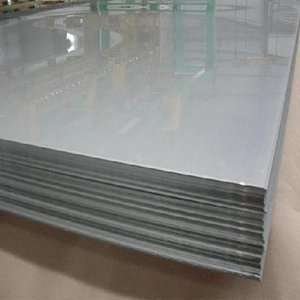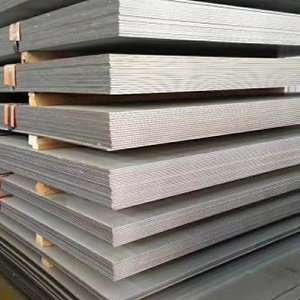Type 309 (UNS S30900/1.4828)
• Very tensile – A small section of steel can support a large structural mass.
• Easily malleable – It can be mold into any shape, or size.
• Very durable – Able to withstand immense external pressures like thunderstorms and earthquakes.
• Environment Friendly
Description
Type 309 stainless steel is a chromium-nickel austenitic steel with a 0.08% carbon composition.
It’s highly corrosion resistance, heat resistance, oxidation resistance of up to 2000⁰ F, and overall strength.
It is highly resistant to sulfidation but low resistance to carburization and should not be used in atmospheres with a high carburizing effect.
It has the same machining properties as Type 304 stainless steel, meaning it to be stamped, rolled, drawn, and formed with ease.
Common Names: It’s commonly known as Chromium-Nickel steel.
Executive Standards/Grades:
- JIS: G4309
- ASTM: ATSM A240
- DIN:1.4828
- GB:0Cr18Ni9
- EN: X15CrNiSi20-12
Chemical Properties:
Type 309 stainless steel has the following chemical composition:
- Carbon- 0.08%
- Manganese- 2.00%
- Chromium- 22.0% – 24.0%
- Nickel- 12.0% – 15.0%
- Molybdenum- 0.75%
- Sulphur- 0.03%
- Copper- 0.75%
- Phosphorus-0.045%
- Silicon- 1.00%
Mechanical Properties:
- Hardness (HRB) – 95 (maximum)
- Reduction Area (%) – 50
- Elongation (%) – 40
- Yield Strength(Mpa) – 205
- Tensile Strength(Mpa) – 515
- Poisson’s Ratio: 0.27 – 0.303
- Melting range:2550-2590 ⁰ F
Physical Properties:
- Density (1000 Kg/M3) – 0.289 lbs./ in3 9.01 g/cm3
- Elastic Modulus(Gpa) – 29 × 103 in tension and 11.2 × 0103 in torsion
- Thermal Conductivity (Btu/ft hr ⁰ F) – 9.0
- Specific Heat (Btu/lb. hr ⁰ F) – 0.12
- Electrical Resistivity (Micro ohm-in) – 68 ⁰ F (20 ⁰C)
- Magnetic Permeability (H) – 200 Oersteds
Key Features:
- High corrosion resistance – Provide great resistance from corrosion, especially in marine atmospheres
- It has a high oxidation resistance
- High tensile strength
- Heat resistant to high temperatures – It can withstand temperatures up to 2000⁰ F
Forms Available:
Stainless Steel Type 309 is available in different forms such as:
- Pipe
- Flat sheet
- Round
- Ribbon wire foil
- Coil strip
Applications:
Because of these properties, mainly its ability to effectively work under high temperatures, Type 309 stainless steel has a wide range of applications including:
- Oven and kiln lining
- Fireboxes and furnaces
- Aircraft engines
- Car exhaust parts
- Heat exchangers
- Boiler baffles
Possible Alternatives Grades:
Type 309 stainless steel has some possible alternatives that can be used. Such as:
- 309S – the low carbon version of 309.
- 309H – has chemical compositions of SAE wrought stainless steel.
- 310- an austenitic heat-resistant alloy with excellent resistance to oxidation under mildly cyclic conditions.
- 310S – low carbon version of 310.
- 310H – has carbon content and is a preferred choice for high-temperature applications.
- 330- an austenitic, nickel-chromium-iron-silicon alloy that has outstanding resistance to oxidation and carburization up to 2200°F.
FAQs:
- What is the difference between type 304 and type 309 stainless steel?
Type 309 is a heat-resisting austenitic stainless steel, with .23% chromium. It is around 5% more than type 304 and thus better for corrosion at high temperatures
- Is type 309 stainless steel magnetic?
Type 309 stainless steel is a non-magnetic alloy in annealed but slightly magnetic in cold conditions.
- Does type 309 stainless steel rust?
Alloy 309 is more corrosion resistant than most steel alloys because of the high chromium in it.
Get A Free Quote Now!







